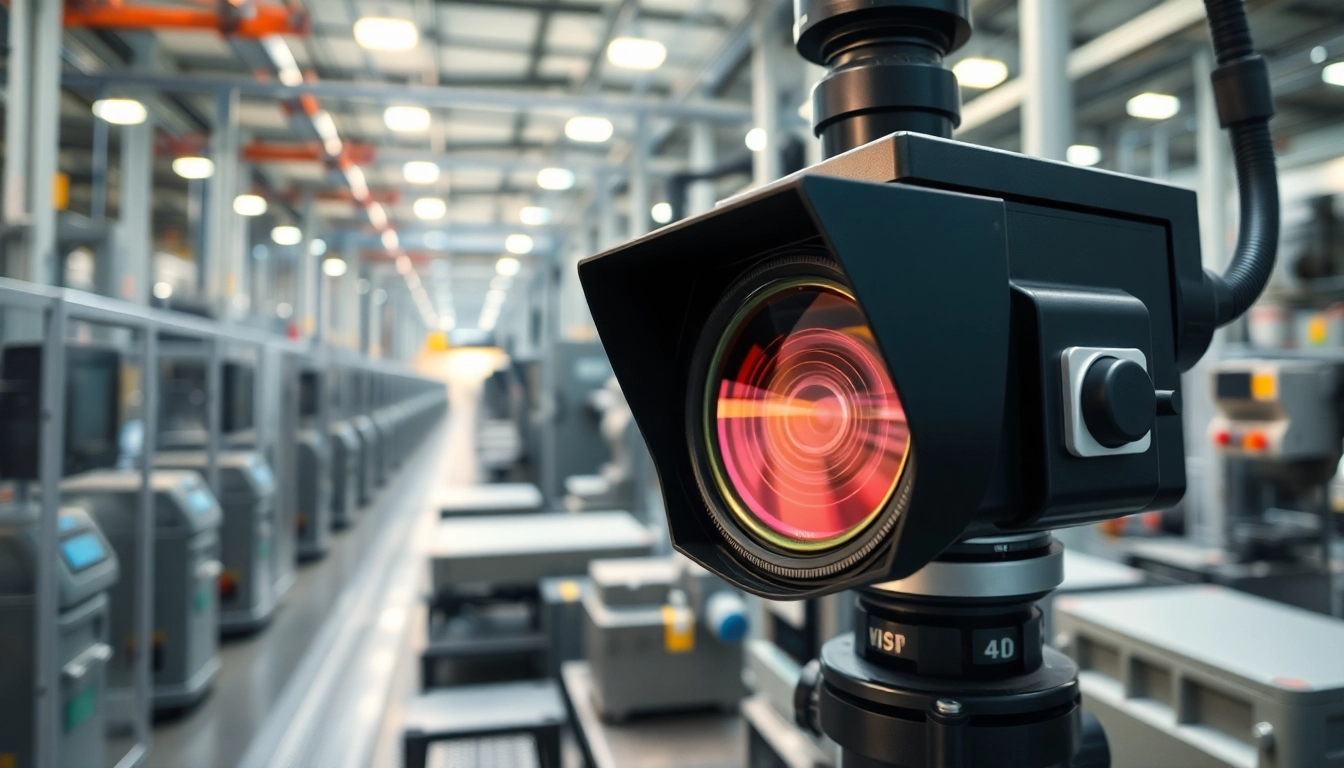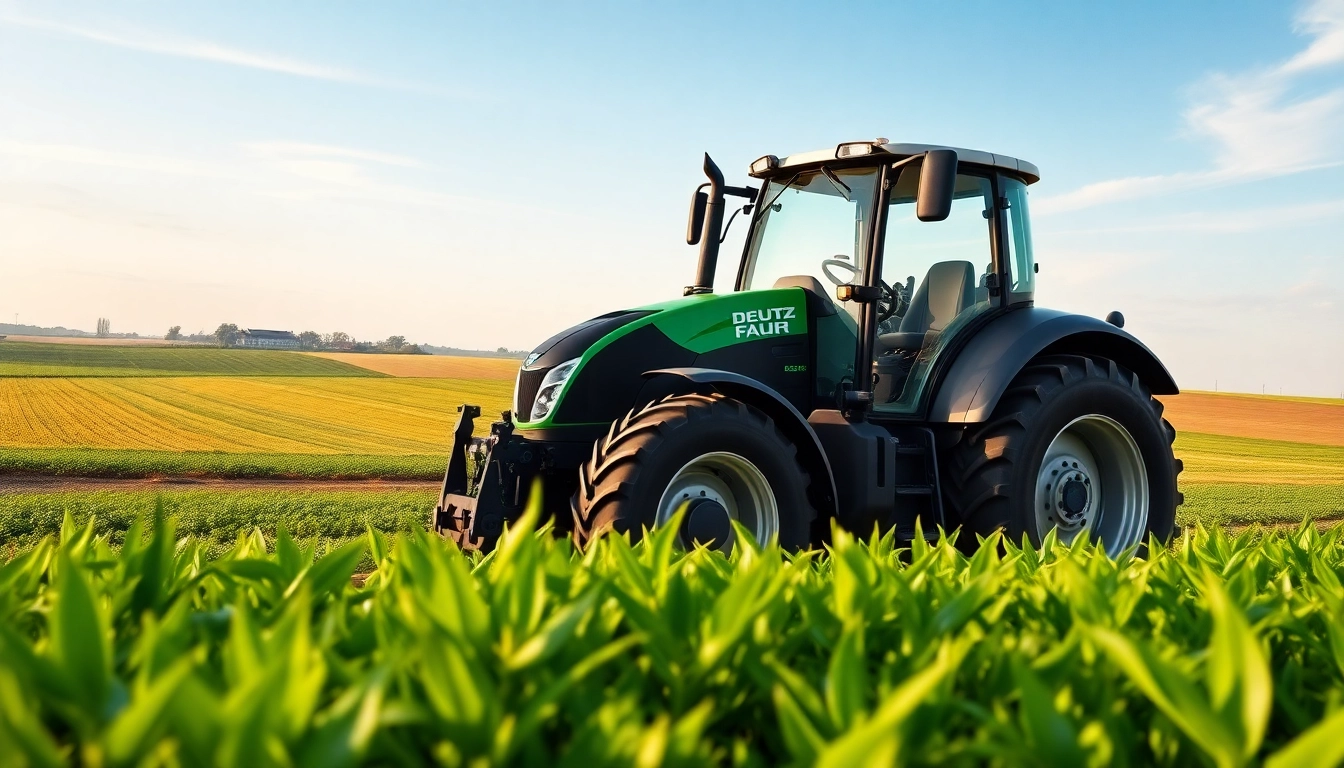1. Introduction to Machine Vision
In today’s rapidly evolving technological landscape, machine vision has emerged as a cornerstone for manufacturing and automation. It encompasses the technology and methods employed to enable machines to interpret and process visual information from the surrounding environment, mimicking human visual capabilities. This introduction aims to elucidate what machine vision is, its historical development, and its fundamental components.
1.1 What is Machine Vision?
Machine vision can be defined as the ability of a computer to see and interpret visual information through the use of electronic devices. This capability incorporates various components, such as cameras, sensors, lighting systems, and sophisticated software that allows for image analysis. Unlike traditional human vision, machine vision systems Must automate processes by identifying, classifying, and making decisions based on visual inputs. The technology is widely used in industrial settings for applications such as quality control, robotics, and autonomous vehicles.
1.2 History and Evolution of Machine Vision Technologies
The evolution of machine vision can be traced back to the late 1960s when researchers began exploring the principles of image processing through computer algorithms. The system’s early development was slow, primarily due to limited computing power and expensive hardware. By the late 1970s, advancements in photonics and digital imaging tackled many of these hurdles, leading to the inception of the first commercial machine vision systems in the 1980s.
With the rise of powerful microprocessors, machine vision underwent significant advancements in the 1990s. Software capabilities improved dramatically, allowing for real-time processing of images. Today, the integration of artificial intelligence and machine learning has further transformed machine vision systems, pushing the limits of what these technologies can achieve.
1.3 Key Components of a Machine Vision System
A fully functional machine vision system comprises several crucial components:
- Cameras: The eyes of the machine vision system, cameras capture visual information. They can range from standard 2D cameras to advanced 3D imaging systems.
- Lighting: Proper illumination is essential for achieving optimal image quality, as it enhances feature detection and accuracy.
- Processing Hardware: This includes computer systems that handle image data, utilizing powerful CPUs and GPUs to conduct analysis and decision-making.
- Software Algorithms: The brains of the system, software interprets the images captured by the cameras. Algorithms can include everything from basic image processing techniques to complex machine learning models for object detection and classification.
- Networking and Communication: Integrated systems often need to communicate with other devices or computers. Networking protocols ensure that data is transferred smoothly across the production line or between multiple systems.
2. How Machine Vision Works
The inner workings of machine vision involve multiple stages, from image acquisition to processing and analysis. Understanding these stages provides insights into how machines perceive and interpret their environment.
2.1 Image Acquisition Techniques
Image acquisition is the first and critical step in any machine vision application. The effectiveness of subsequent processes largely depends on how well visual data is captured.
This stage typically involves:
- Camera Selection: Different types of cameras (CCD, CMOS, etc.) are chosen based on requirements such as resolution, speed, and application environment.
- Lighting Setups: Lighting conditions can make or break the performance of a machine vision system. Techniques such as backlighting, diffuse lighting, and using specific wavelengths can help highlight features for better detection.
- Triggering and Timing: Accurate timing in capturing images is crucial, especially in high-speed production lines. Triggering methods ensure that images are captured at the right moment.
2.2 Processing and Analysis of Visual Data
Once the images are captured, they need to be processed and analyzed. At this stage, the visual data is converted into meaningful information. Key methodologies include:
- Image Enhancement: Techniques are applied to improve the quality of images. This can mean adjusting brightness, contrast, or removing noise.
- Feature Extraction: This involves identifying and isolating particular features of interest within the image, such as edges, corners, or specific shapes.
- Pattern Recognition: Using advanced algorithms, systems recognize patterns within the features extracted, crucial for tasks like quality inspection.
2.3 Types of Machine Vision Systems Explained
Machine vision systems can be classified into several types, each suited for specific applications:
- 1D Machine Vision Systems: These are typically used for identifying features along a single line, suitable for barcode reading or linear inspection.
- 2D Machine Vision Systems: Most prevalent in quality control, these systems analyze flat images to detect defects or measure dimensional specifications.
- 3D Machine Vision Systems: Utilizing depth information, these systems can recreate three-dimensional images for complex object inspections and robotics.
- Color Vision Systems: These systems analyze the color aspects of an object, which can be essential for production processes requiring specific color detection.
3. Applications of Machine Vision in Various Industries
Machine vision technology has penetrated numerous industries, bringing profound effects on efficiency, accuracy, and cost-effectiveness. Below are prominent applications across various sectors.
3.1 Manufacturing and Quality Control
In manufacturing, machine vision systems are extensively employed for quality inspection, ensuring that products meet strict standards. The technology assists in:
- Defect Detection: Systems can automatically spot defects that may be invisible to the naked eye, thereby reducing waste.
- Part Identification: By reading barcodes or QR codes, machine vision ensures the right components are used in assembly processes.
- Measurement Verification: Automation facilitates verification of critical dimensions, ensuring compliance with design specifications.
3.2 Logistics and Automation
In logistics, machine vision streamlines operations through automation and efficiency boosts:
- Package Tracking: Systems are used to scan items and track their progress throughout the logistics network, providing real-time updates.
- Inventory Management: Machine vision can aid in monitoring stock levels and conditions, automating reordering processes.
- Sorting Systems: Automated sorting requires rapid decision-making based on visual input, ensuring packages reach their correct destinations.
3.3 Healthcare and Medical Imaging
Machine vision holds a transformative role in healthcare, particularly in medical imaging:
- Diagnostic Imaging: Machine vision systems can analyze X-rays, MRIs, and CT scans for anomalies, aiding radiologists in diagnosis.
- Pathology: Image analysis software assists pathologists in evaluating tissue samples, improving the accuracy of cancer diagnoses.
- Robotics in Medicine: Surgical robots equipped with machine vision capabilities enhance precision, reducing recovery time for patients.
4. Benefits of Implementing Machine Vision
The adoption of machine vision technology is rapidly increasing, primarily due to the multitude of benefits it offers to organizations:
4.1 Increased Efficiency and Accuracy
Machine vision systems enable processes to be executed more efficiently, with a significant reduction in human error. Automation of visual inspections not only speeds up production lines but also enhances accuracy, leading to higher quality outputs.
4.2 Cost Reduction in Production Processes
Implementing machine vision can lead to substantial cost savings. By minimizing defects and the necessity for manual inspections, companies can significantly reduce waste and rework, optimizing resource allocation.
4.3 Enhancing Product Quality and Compliance
Machine vision supports stringent quality assurance protocols. By ensuring products meet predefined standards, businesses can prevent costly recalls and maintain regulatory compliance, embedding quality into the manufacturing process.
5. Future Trends in Machine Vision Technology
As technology continues to advance, machine vision is poised for remarkable growth. Below are some trends shaping its future:
5.1 Integration with Artificial Intelligence
The integration of AI in machine vision systems is revolutionizing how visual data is interpreted. AI algorithms can learn from data to enhance detection capabilities, identify complex patterns, and automatically adapt to changing environments, leading to more intelligent inspection systems.
5.2 Advancements in Hardware and Software Solutions
Continued advancements in camera technology, sensor capabilities, and processing power only enhance machine vision applications. As hardware becomes more component-efficient and software more sophisticated, broader application ranges will emerge.
5.3 Predictions for Industry Adoption and Growth
Industry analysts predict that the machine vision market will experience significant growth as companies prioritize automation to achieve operational efficiencies. As smart factories and Industry 4.0 gain traction, machine vision will be increasingly recognized as a critical component in achieving specialized automation goals.



